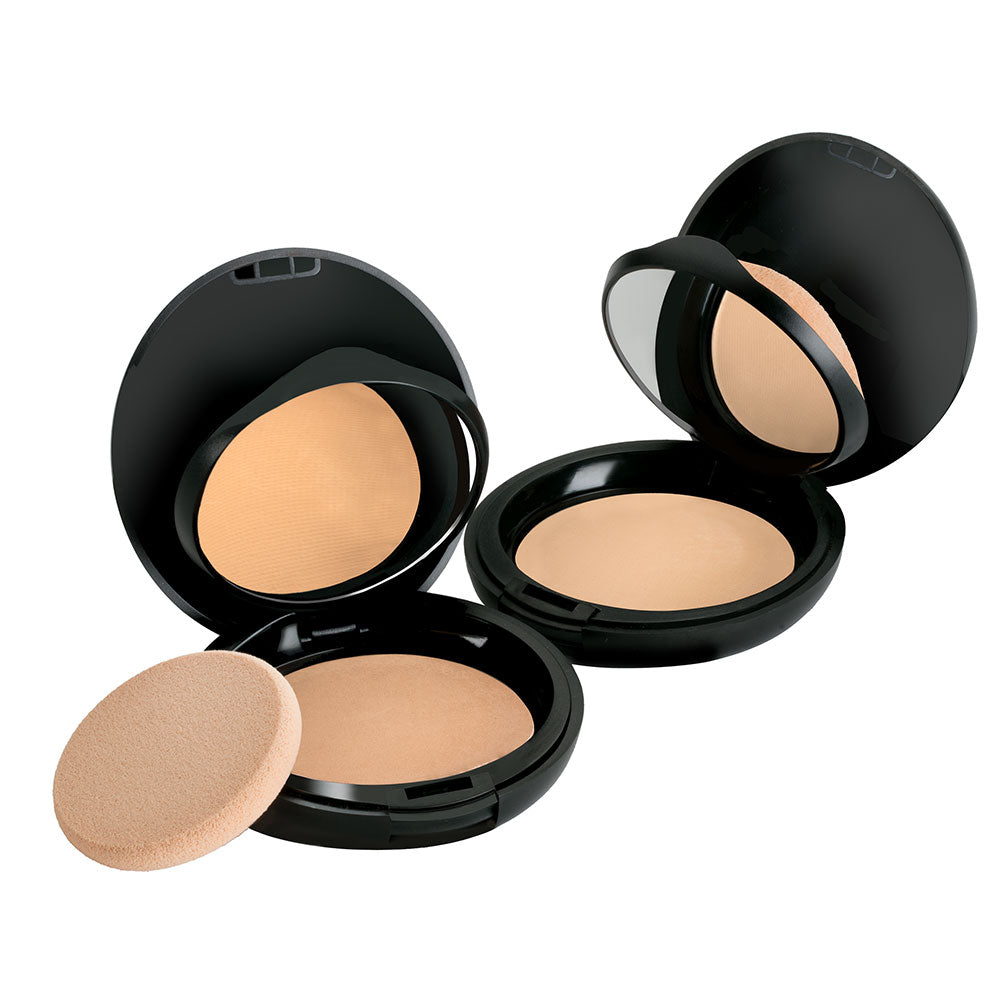Blog
Is SPF Makeup Enough?
It’s September and with temperatures dropping, the sun playing hide and seek and rain clouds making an all too frequent appearance, you may be tempted to ditch your sunscreen and switch to SPF makeup instead. Tempting though it may be, fall (or any time of the year for that matter) isn’t the time to do it. SPF makeup may seem like a serious win-win – who doesn’t love multi-tasking products, after all – but it’s better in concept than in theory. SPF products, including sunscreens and makeup, achieve their rating via testing methods that involve precise application of a specific amount of product skin (2 mg of product per square centimeter of skin, or a dollop equivalent to the size of nickel). Studies have shown that most of us don’t apply enough sunscreen and this almost certainly applies to SPF makeup. When was the last time you applied that much foundation to your skin? Yup, me too! So in theory, while SPF makeup could offer up enough protection against UVA and UVB rays, the reality is that most of us use it in a way in which it just won’t happen. Foundations and powders are helpful, there’s no doubt about that, but they shouldn’t be used as your primary source of sun protection. They can however, bump up protection to your daily sunscreen and that’s the way to get the most out of them. How To Use SPF Makeup For optimal sun protection, choose a dedicated broad spectrum sunscreen instead. Apothekari Shade SPF 30 is a zinc-oxide, mineral sunscreen that delivers non-whitening UVA/UVB sun protection and is designed for all skin types. It is especially suitable for sensitive skin and contains antioxidant support to protect against free radical damage. For maximum benefit, we recommend applying it directly over an antioxidant serum (like our Apothekari Bespoke Vitamin C) because sunscreens work in tandem with antioxidants to protect against UV damage in separate ways. For a wide selection of UVA/UVB sunscreens, our sister site PhaMix.com stocks a large selection. There’s no reason to shun SPF makeup; just keep in mind that it’s not meant to replace your sunscreen. If you want to use makeup with SPF, apply it on top of your sunscreen. Try to seek out a formulation that protects against both UVA and UVB rays to help protect against premature aging, sunburns and skin cancer. Additionally, aim for an SPF rating of 30 or higher to ensure maximum protection. Think of sunscreen as the cake, with SPF makeup as the icing on the cake. It’s not the main event, but it can add to it.
Learn moreSunscreen Ingredients | What To Look For
When it comes to choosing a UV protective treatment, the sunscreen ingredients that make up the formulation are one of the most important factors to consider. In this post, let’s dive into the most commonly used sunscreen ingredients to determine which one may be best for you. Chemical vs Physical Sunscreen Ingredients Sun filtering agents can be broken down into one of two main categories – chemical blockers and physical blockers: Chemical blocking agents (also referred to as organic ingredients) are absorbed by the skin’s top layer and work by absorbing the sun’s rays and turning them into harmless energy. Some chemical filters can also scatter UV rays, but that isn’t their primary function. They include ingredients such as Mexoryl SX, Mexoryl XL, Tinosorb S, Tinosorb M and older one like avobenzone and oxybenzone. Physical blocking agents (also referred to as inorganic ingredients) work by sitting on top of the skin and blocking or deflecting UV rays. Studies have shown that just like organic ingredients, that they also have the ability to absorb UV rays. Zinc oxide and titanium oxide are the two physical blockers available today. Sunscreens may be comprised of either chemical or physical ingredients or may contain a combination of both. Both types offer advantages and disadvantages. Chemical Sunscreen Ingredients are capable of delivering higher UVA protection, especially with the newer filters like Tinosorb S and M and Mexoryl SX and XL. They are capable of blocking both UVA and UVB rays and are often combined together to maximize their protection. They tend to go on clear and most do not leave a white cast upon application. The downside of chemical ingredients is that they may be associated with allergic reactions, which is possibly problematic for sensitive skin. As well, several are associated with hormone disruption, with oxybenzone being the one implicated most. Two chemical sun filters – oxybenzone and octinoxate – have been associated with destruction of the coral reef and the State of Hawaii is hoping to ban sunscreens containing these two ingredients by 2021. Physical Sunscreen Ingredients are the ideal choice for individuals with sensitive skin. Because they sit on top of the skin, they are not absorbed and are therefore less likely than chemical filters to cause allergic reactions. You have likely seen zinc oxide used in formulations to alleviate rashes in babies (diaper cream), where it is incorporated for its soothing and calming properties. Sunscreens containing physical filters are also considered the product of choice for individuals with melasma (although both types are better than no sunscreen at all!). Zinc oxide blocks against the full UVA/UVB spectrum (so it can be the sole ingredient in a formulation) and titanium dioxide blocks against UVB and some UVA. If you are using a titanium dioxide based sunscreen, ensure that it is combined with ingredients that cover the full UVA spectrum. The downside of physical sunscreens is that may feel heavy (because they aren’t absorbed) and they have been known to leave a white cast on skin. This effect can be minimized by using products formulated with nanoparticles. Studies have shown that nanoparticles in sunscreen don’t penetrate into the bloodstream if applied to intact skin so there shouldn’t be any safety concerns with their application. Our Shade SPF 30 is a fantastic product to consider if you are looking for a broad spectrum physical blocking sunscreen that does not leave a white cast upon application. With the wide range of effective sunscreens today, it shouldn’t be too difficult to find one that works for you. Look for a formulation that fits your budget and your skin type without it feeling greasy or leaving you looking like a ghost. Keep these additional 3 tips in mind: Look for a product labelled as ‘broad spectrum’ to ensure protection against the full UVA/UVB spectrum Ensure you purchase something with a minimum SPF 30 for adequate protection If you are going to be active and/or swimming, select a water resistant formulation. Sunscreen is the most important product to help protect your skin against sun damage. Find one you love and use it every day.
Learn more


